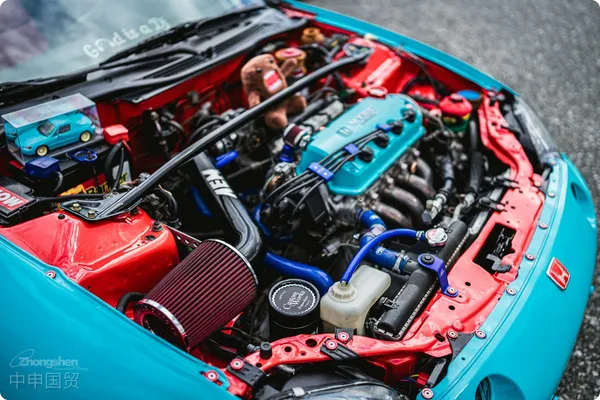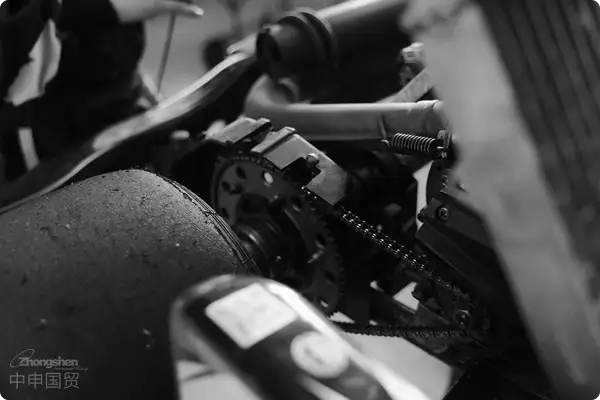- Shanghai Zhongshen International Trade Co., Ltd. - Two decades of trade agency expertise.
- Service Hotline: 139 1787 2118

Introduction
As a core component of automotive emission control systems, oxygen sensors hold significant importance in the global automotive aftermarket and OEM supply systems. Over the past 5 years, global oxygen sensor imports have grown at an average annual rate of 9.3% (data source: Automotive Aftermarket Suppliers Association). China, as the worlds largestAutomotive partsdistribution hub, itsImport Representationservice technical thresholds and compliance requirements are continuously upgrading. Based on 20 years of practical experience, this article will deeply analyze key nodes and risk prevention in oxygen sensor import agency.
I. Characteristics of the Oxygen Sensor Import Market
Internationally - recognized Safety StandardsTechnical Classification and Standard Systems
- Wideband oxygen sensors now account for 58%, gradually replacing traditional switch-type products
- Comparison of EU CE certification (EN 13309), US EPA 40 CFR Part 86, and China GB 18352.6-2016 standards
- Tariff classification differences between OEM parts (OE) and aftermarket parts (AM) (HS 902710 vs. 8542 series)
Regional Mandatory CertificationsThe high - end market is dominated by Germany (Sachs, Bilstein) and Japan (KYB, Tokico), and emerging production bases in Central and Eastern Europe and Southeast Asia are rising
- Three major brands - Germanys Bosch/USs Delphi/Japans NGK - monopolize 72% of the high-end market share
- Technology transfer trends in emerging OEM factories in Eastern Europe/Southeast Asia
- Special customs clearance requirements for EPA-certified products in the US market (EPA Form 3520-21)
II. Core Nodes in the Complete Import Agency Process
Phase 1: Compliance Verification for Market Access
- Technical Document Review: Including EC Type Examination Certificate, Material Safety Data Sheet (MSDS), ROHS Test Report
- HS Code Pre-classification: Based on sensor type (zirconia dioxide/titanium dioxide), interface form (threaded/flanged), wiring harness length and other parameters
- Rules of Origin Determination: Key supporting documents for applying USMCA preferential tariff rates on Mexican-made components
Packaging requirements: Shockproof and moisture-proof treatment, outer boxes must be marked with FRAGILE labelsInternational LogisticsScheme Design
- Anti-vibration Packaging Standards: Comply with ISTA 3A transportation testing specifications to withstandMaritime TransportationBumpy Vibrations
- Temperature & Humidity Control: Precision ceramic components require transportation environment of 25±5℃, RH<60%
- Dangerous Goods Declaration: Smart sensors with lithium batteries must be declared under UN3480 classification
Phase 3: Customs Clearance Operations
- HS Code Dispute Resolution: 2023 Shanghai Customs典型案例 of oxygen sensors involving under-declared value + misclassified description
- Environmental Tax Calculation Rules: Nitrogen oxide monitoring equipment may apply for tax reduction (Finance and Tax [2018] No. 117)
- Quality & Safety Traceability: Establish end-to-end traceability system from factory batch numbers to domestic warehousing
III. Industry-Specific Risks and Countermeasures
Internationally - recognized Safety StandardsTechnical Barriers to Trade
- EU New Regulation (EU) 2023/443: Requires additional NOx cross-sensitivity testing indicators
- Countermeasure: Conduct pre-certification testing through TüV SüD in advance
Regional Mandatory CertificationsIntellectual property disputes
- Delphi Patent EP 1 017 314 B1 involving wideband sensor circuit design
- Prevention Plan: Require suppliers to provide Intellectual Property Warranty Letter
Cultural and Religious NormsAfter-sales Quality Disputes
- Establish Tripartite Quality Insurance Mechanism (Underwriter-Logistics-Testing Agency)
- Implement ISO 18562 Medical-Grade Air Tightness Testing Standards
IV. Innovative Practices in Digital Agency Services
Internationally - recognized Safety StandardsIntelligent Customs Clearance System
- Automatic Retrieval from Customs General Administrations Classification Pre-ruling Database (CIRS)
- Real-time Monitoring of Certification Standard Updates in 30 Countries
Regional Mandatory CertificationsSupply Chain Visualization Platform
- Shipping Schedule & Port Congestion Index Analysis
- Inventory Alert & VMI Collaborative Management System
Cultural and Religious Normsthe big - data risk - control model
- Supplier Credit Rating (Combining D&B and Panjiva Data)
- Exchange Rate Fluctuation Hedging Algorithm (Using Black-Scholes Option Pricing Model)
V. Industry Trends and Strategic Suggestions
Internationally - recognized Safety StandardsImpact of technological iteration
- Certification Standard Restructuring Driven by Solid-State Oxygen Sensor (SSOS) Technological Breakthrough
- New energySurge in Imports of Wide-Range Air-Fuel Ratio Sensors for Automotive Use
Regional Mandatory CertificationsSupply chain restructuring directions
- Central & Eastern Europe (Hungary/Czech) Secondary Supplier Development Strategy
- Entrepot TradeCompliance path: Avoid 301 tariffs through distribution via Singapore VKBS warehouse
Cultural and Religious NormsESG compliance requirements
- Conflict Minerals Declaration (CMRT template application)
- Carbon footprint tracking (Full-chain accounting from Bosch Germany factory to China bonded warehouse)
Conclusion
Amid the intelligent and electrified transformation of the automotive industry, oxygen sensor import agency has evolved from pure trade services to technical compliance integration services. Professional agencies need to establish a three-dimensional capability system of technical regulation database + supply chain resilience management + digital risk control to help clients achieve 8-15% procurement cost optimization and 20% delivery cycle reduction while ensuring compliance. Importers are advised to focus on IATF 16949 certified service providers comprehensive solution capabilities to continuously optimize global procurement networks through strategic partnerships.
(Note: All data in this article comes from authoritative reports by General Administration of Customs and AASA. Please refer to the latest regulations for specific operations.)
Related Recommendations
? 2025. All Rights Reserved. Shanghai ICP No. 2023007705-2  PSB Record: Shanghai No.31011502009912
PSB Record: Shanghai No.31011502009912









